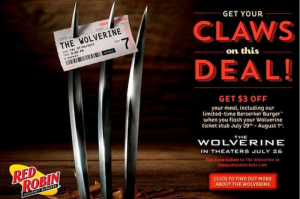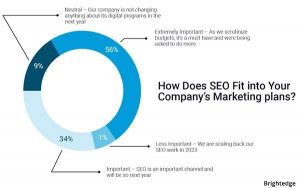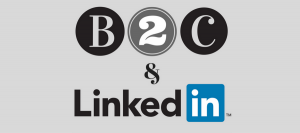I remember landing my first consulting clients by sales prospecting through the following channels:
- Referral
- Cold outreach
The first one came from a friend providing consulting in a different field. He did reach out to me and asked if I was interested – so that worked out pretty well (a warm reference plus a vetted client).
#2 was through LinkedIn. I signed up in 2007, joined a few groups, added the folks in my circle. I met some local peers who were building a community of a sort – similar to what “LinkedIn Local” is nowadays.
#3 was a cold call for a tech platform I had the chance to use at work. We were early adopters, there were probably a dozen people nationally using it. My prospects didn’t have tons of options anyway.
Sales prospecting in most industries (especially B2B and enterprise) is a complex endeavor that goes through a long journey with multiple checkpoints.
Let me share with you the 5 most powerful sales prospecting strategies that we have employed which will benefit SMEs.
1. Identifying Criteria in Qualifying Leads
Sales reps handle SQLs (sales qualified leads) which have been promoted from MQLs (marketing qualified leads).
MQLs are ranked according to interactions with a website or a landing page — say, a download or filling in a form; sharing a status, clicking the “live chat” popup.
Therefore, qualifying leads rarely happens by pointing to a random name in a long contact list or randomly selecting an email from a paid database.
The best action item you can prioritize for is identifying criteria that:
- Is closely related to your target audience
- Is easy to identify in a somewhat anonymized pool
- Doesn’t overlap with too many other audiences
- Works on top of other filters to get you the appropriate pool size
Even having all of those nailed down, if your prospect isn’t interested in buying now (or even looking around), your success rate would be close to zero.
And that’s precisely why the journey is so long and goes through a lead scoring process in the first place.
2. Building The Right Partnerships and Sales Funnels
Our B2B sales practices provide a good workflow for anyone who is eager to spend a couple of years on building the right partnerships and sales funnels.
With regard to our sales funnel over the past year, it’s a combination of several things.
a. DevriX Articles
We invest heavily in inbound marketing. Every now and then, an article goes viral on social media, Hacker News, Inbound.org or some other aggregator. Some are picked for republishing or lead to an invitation for a podcast interview or a webinar.
Our content strategy is carefully planned. We have several buyer personas we target – detailed to a T. We also discuss the different stages of the buyers’ journey and source the proper keywords accordingly.
There are several types of keywords for organic and social search:
- Commercial
- Transactional
- Informational
- Navigational
Most people focus on the last two categories. We also put some emphasis on transactional keywords whenever a client is actively looking for a solution and close to making a transaction. This reduces the back and forth for some leads and closes sales faster (even though this is a small percentage of all visitors).
b. My Personal Branding
I spend 8–10 hours on Quora, LinkedIn, Twitter weekly. My answers there serve multiple purposes:
- I share some answers with my team in order to reduce the training/onboarding time.
- This increases organizational transparency as everyone can see what the CEO is up to and what our vision/process looks like through my lens.
- Some of that content attracts partners or prospects.
- Most of the time, clients are just doing due diligence and landing on my posts, interviews, podcasts, and answers. This helps them gauge our process and decide whether we’re a good fit for them.
- It also helps with the hiring process – receiving applications from people who are interacting with my content.
I also record weekly LinkedIn videos that get republished on YouTube – and some of those topics are based on Quora answers (which occasionally get reposted as well).
c. Existing Partnerships and Our Network
Being active in multiple communities (and running my own show for about a decade) has led to a large network of peers in different fields. Some time ago, I used to train and do technical courses as well – and some of my entry-level folks now run teams in multinational organizations, recommending my consulting services.
I was recently approached as an adviser to a new cryptocurrency which is in the works. Everyone talks about crypto, but early birds get additional benefits and some PR plus we can build some payment gateways and integrate them while everyone else is getting ready to jump on board.
A few days ago, I was also contacted by the manager of a Drupal company, which got acquired by a large dev shop (hundreds of people), offering services in several other CMS and frameworks. He pinged me on LinkedIn for a project quote for a possible long-term agency partnership.
Sure, referrals also work every now and then – although not as much.
d. Specialization
While we are a full-service agency, our branding revolves primarily around WordPress.
We’ve invested a ton of time in the WordPress ecosystem – working with notable brands, automotive manufacturers, a couple of banks, several universities (including Ivy League members) on complex WordPress multisite networks or large portals.
We have also specialized in SaaS development and employ 6 WordPress Core contributors (the folks who have contributed code to the core WordPress software that everyone uses).
This expertise is hard to match – there are a handful of agencies out there that have been bending WordPress as much as we do. Sure, we’re not #1 worldwide, but we rank in the top the 20 (and often top 10 in some charts). Given that WordPress powers 29% of the web, that’s not too shabby.
And since our main competitors charge 2–4 times more than us or have high minimum costs (some start from $ 250K or even half a million per project), there’s a niche we have occupied.
We don’t really bid on proposals since retainers are the main thing we do. Some of our clients have been with us for years – and the recurring revenue helps us plan payroll, marketing activities, sponsorships, paid campaigns, development of internal tools, consulting services.
Inbound marketing and branding are really the two main things we do. But we may bid on projects occasionally if there’s an exciting opportunity worth pursuing.
3. Presenting Previous Work with Clients to Prospects
You can anonymize the work done for a corporation and omit identifiers that map your work to a particular company.
Note: If you hesitate about data privacy, consult with a lawyer.
Finding the right balance isn’t easy. It takes a few iterations and multiple re-reads to get it right.
Let’s say you work with BMW.
Referring to “One of the leading German car brands” is too close. Yes, it could be Mercedes or Volkswagen, or maybe Audi — but it’s close enough to be dangerous.
Instead, use “a leading European car manufacturer”, “a top producer of fast vehicles”, “a German leader in the transport industry.” That expands the list to a dozen or more potential companies instead.
While describing the type of work, make sure you don’t leave other essential details.
I’m not talking about the obvious ones like people/product names. But a certain job role may only exist in a company or two. A meeting location could be in close proximity to an office. You get the drill.
Publishing documents is almost never a great idea.
Screenshots, however, come with a twist. You can revamp a UI with something that demonstrates the same concept but a different look and feel (color scheme, alignment of fields, anything else).
Again, this may require a consultation but abstracting your solution to something perceivable without copying the existing product is usually possible within certain terms.
4. Knowing Your Competitors
What if your prospective client asks about a competitor?
Make sure you know your main competitors well.
This is a key exercise that starts with your business plan and during regular reviews every few months or so.
There are several reasons why this is so important. It allows you to:
- Determine your unique selling proposition
- Find out what your weak points are
- Discover certain areas (industries or niches) that your competitors don’t focus on
- Study their pricing structure
- Review their testimonials or public feedback from customers
Clients asking for this comparison are doing you a favor. Once you’ve prepared the comparison matrix, you’re fully aware of their intent. Priorities. And the weak spots of your competitor.
The best policy is disclosing some of their known benefits — and back them up with the corresponding caveats.
Examples:
- Company X has been around longer and employs more experts. But they only focus on enterprise customers.
- Y owns one of the leading products in the space. But their pricing is approximately 5x what we charge for the features you need.
- Z agency is more reputable in the space. But they invest a ton more in marketing while support is known to underdeliver whenever you need them the most.
Make sure you don’t exaggerate and deliver information that isn’t confidential.
5. Handling Price Negotiations
Haggling for a lower price is so common that you can’t even tell the truth from the usual bargain.
As a salesman, business owner, entrepreneur, this isn’t your problem. It’s your prospect’s problem.
Invoking emotions is among the top 10 rules in marketing. Sales is no different. It works sometimes, and looking for the best deal possible is common business sense.
Heck, negotiations are so common in certain parts of the world that it is considered an insult if you don’t fight over the cost for a certain period of time. Or jump back and forth between multiple packaged offers.
- Design a process that helps you walk your prospects through a familiar journey if your own pricing model predicts negotiations every single time.
- If you can leverage different opportunities with the vendor, negotiate terms that work for you (think of using their service at a discounted rate, speaking at their event, etc.)
- If you are literally just starting out and your portfolio is non-existent, cutting some discounts for starters isn’t the end of the world until you make a name.
In every other case, know your value and business model.
The best you can do is cut a long-term deal (a 2-year contract) with a discounted price. Or pay upfront for a few months for subscription-based services.
It’s better than nothing!
Otherwise, the customer does not value your service or they are not your target market.
The Bottom Line
B2B sales prospecting targets a small audience – often starting with dozens or hundreds of leads and nurturing them before expanding. The buying journey is much more complicated and requires some personalized approach, designing deeper marketing funnels and consecutive campaigns warming up prospects over time.
B2B is often about building an ongoing relationship. The duration of a contract and the overall lifetime value is significantly higher and businesses want to ensure a healthy and pleasant partnership when selecting a corporate product or a service.
The article was originally published on the author’s blog and reprinted with permission.
Business & Finance Articles on Business 2 Community
(53)
Report Post






